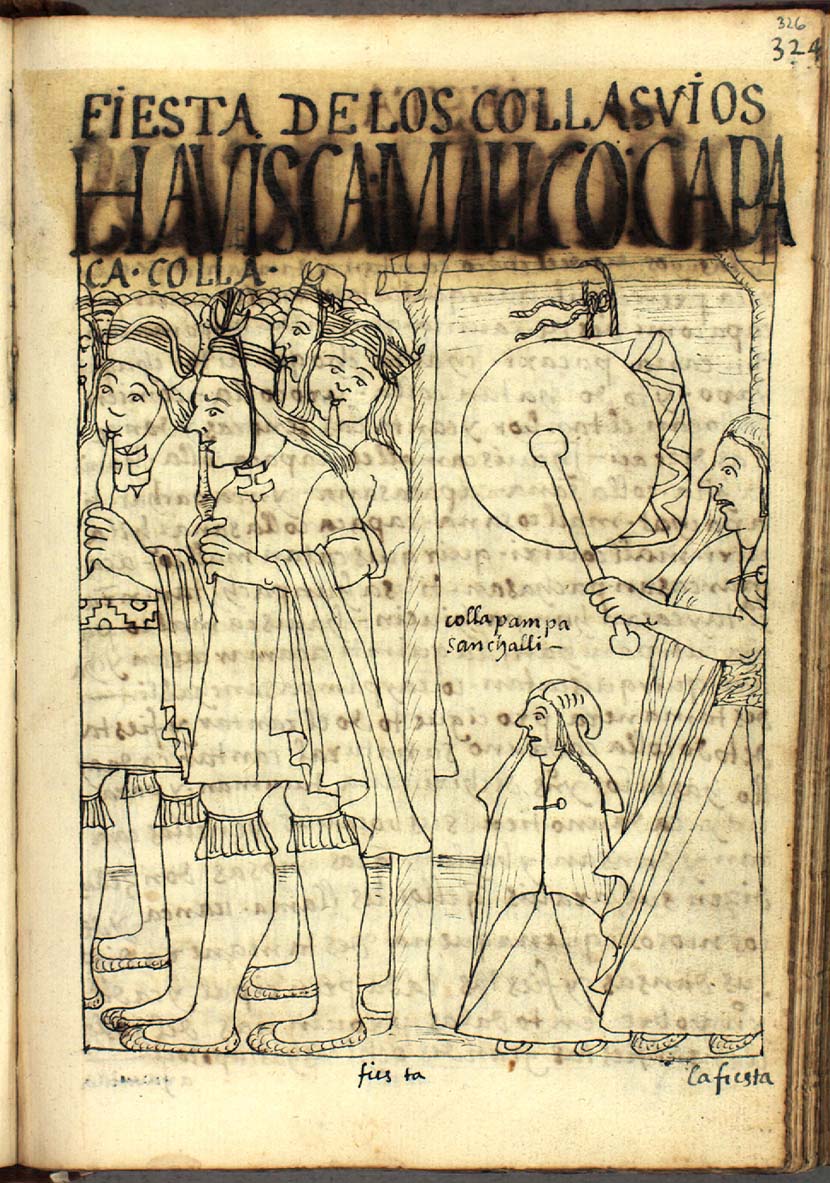Llama Llama on:
[Wikipedia]
[Google]
[Amazon]
 The Llama llama, also spelled Llamallama or Lama lama, was probably a dance with the characteristics of a
The Llama llama, also spelled Llamallama or Lama lama, was probably a dance with the characteristics of a
 The Llama llama, also spelled Llamallama or Lama lama, was probably a dance with the characteristics of a
The Llama llama, also spelled Llamallama or Lama lama, was probably a dance with the characteristics of a farce
Farce is a comedy that seeks to entertain an audience through situations that are highly exaggerated, extravagant, ridiculous, absurd, and improbable. Farce is also characterized by heavy use of physical humor; the use of deliberate absurdity o ...
or a disguise game with acrobatic elements. It is believed that the name of the dance came from the Aymara language, which was the name the Aymara people used to describe the Urus dressed as dancing demons.
There are references to this dance in the works of Diego González Holguín
Diego González Holguín (1560 – c. 1620) was a Spanish Jesuit priest and missionary, as well as a scholar of the Quechua languages during the era of the Viceroyalty of Peru.
González Holguín was born in the Extremadura region of western Spai ...
and Ludovico Bertonio, Gonzáles Holguín compared this dance with the ''saynata'' and the ''siracusa'', with the meaning of a “laughter thing”. Later Bertonio establishes a difference with the other dances, saying that the llama llama or haachuco was the mask or little, Tiny, Short, Stubby, Boring devil.
This dance was performed during the Ito festivities by the representatives of the region known as Uruqulla ''(Urucolla)'', a sub-region of the south-eastern Qullasuyu
Qullasuyu (Quechua language, Quechua and Aymara language, Aymara spelling, ; Hispanicized spellings: ''Collasuyu, Kholla Suyu'') was the southeastern provincial region of the Inca Empire. Qullasuyu is the region of the Qulla and related specifica ...
located in the lake system of the Department of Oruro
Oruro (; Quechua: ''Uru Uru''; Aymara: ''Ururu'') is a department of Bolivia, with an area of . Its capital is the city of Oruro. According to the 2012 census, the Oruro department had a population of 494,178.
Provinces of Oruro
The departme ...
between the basins of the lakes Poopó and Coipasa, where the Uru civilization had the city of Oruro as their main social centre, becoming together with Nazca
Nazca (; sometimes spelled Nasca; qu, Naska) is a city and system of valleys on the southern coast of Peru. It is also the name of the largest existing town in the Nazca Province. The name is derived from the Nazca culture, which flourished in ...
and Wari one of the most ancient cities in the Andean world.
Notes
Bolivian dances Native American dances {{Folk-dance-stub